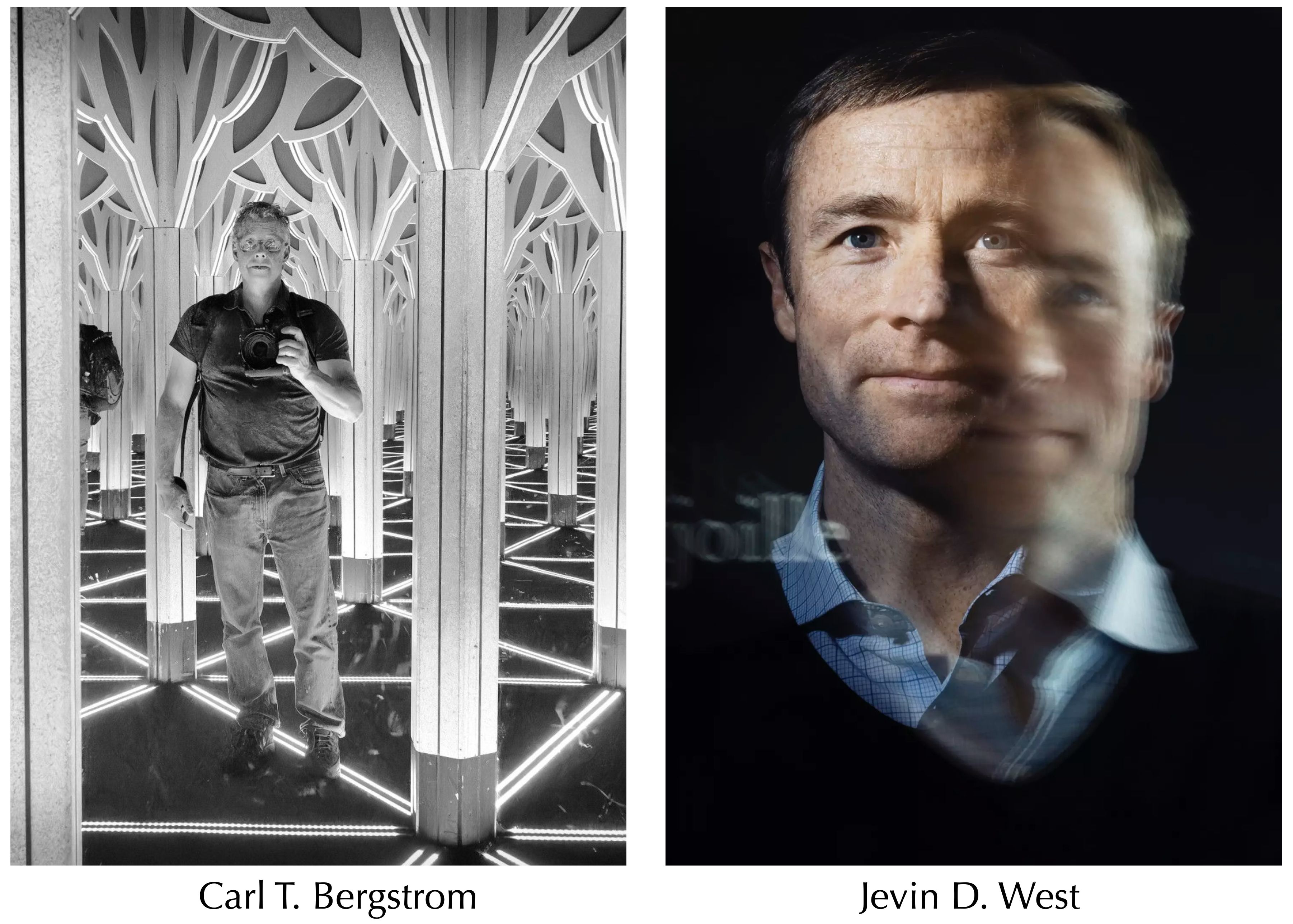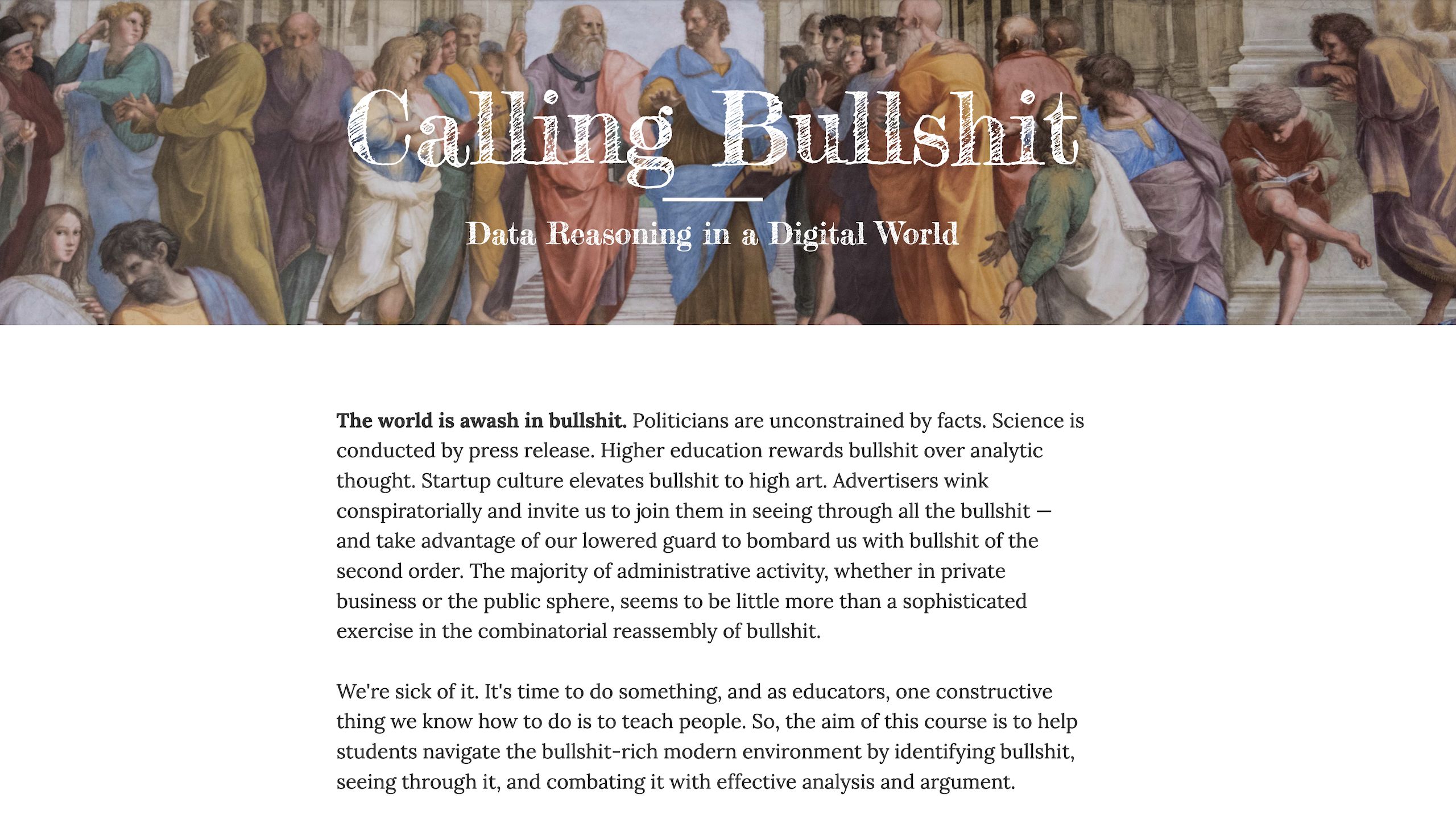
ABOUT US
Who is behind Modern-Day Oracles or Bullshit Machines?


We are professors at the University of Washington. One of us is a biologist; the other an information scientist. We've been researching and teaching together for two decades. We have devoted a large part of our research and teaching careers to studying the ways in which information technology facilitates the spread of misinformation and disinformation through traditional and social media, and to studying what we can do about it as individuals and as a society. In short, we study bullshit, and how to fight it.
There has always been plenty of bullshit to go around, but a new source is emerging: generative artificial intelligence (genAI) and in particular, large language models (LLMs) that are exceedingly good at talking like people do. Their greatest strength, but also their greatest danger, is their ability to sound authoritative on nearly any topic irrespective of factual accuracy. In other words, their superpower is their superhuman ability to bullshit.
This is our second major project in curriculum development. In 2014, we started talking about how data and statistical analysis — the keystones of scientific reasoning — can be abused to mislead people. Drowning in information, people become exhausted. Confronted with the false authority of numbers, people feel disempowered to question what they are being told. We know that one does not need a technical background to ask questions, see through the bullshit, and fight back — and we designed a curriculum to empower our students and readers to do exactly that: Calling Bullshit.
https://callingbullshit.org
https://callingbullshit.org
Our efforts have resonated with a global audience. The course is now taught at over 130 universities around the world, and we delight in teaching it to 180 students each autumn at the University of Washington. To broaden our reach, we wrote a companion book that has sold over 100,000 English-language copies and has been translated into eleven different languages.
Bergstrom and West (2020) Calling Bullshit
Bergstrom and West (2020) Calling Bullshit
We have been tracking the development of generative AI and large language models for a number of years. In 2019, we designed a simple educational game for our webiste Which Face Is Real; the idea was to draw attention to new technologies that allow computers to generate photorealistic faces and other deepfake images. That website went viral, and the game has been played tens of millions of times. When ChatGPT 3.5 was released in November 2022, we made this event a focus of our UW course, and have been writing about generative AI in the scholarly literature and popular press ever since.
https://whichfaceisreal.com
https://whichfaceisreal.com
Acknowledgments: This course draws upon over two years of discussions with literally hundreds of people: friends, family, students, colleagues, Bluesky users, and more.
Molly Crockett, Karen Hausdoerffer, and Helen Bergstrom gave us extensive comments on early drafts of the course.
Teddy Bergstrom conducted the interviews and produced the videos.
How to Cite: Bergstrom, C. T., & West, J. D. (2025). Modern‑day oracles or bullshit machines? How to thrive in a ChatGPT world. Online course. Retrieved [date here] from https://thebullshitmachines.com
Notice of Rights. The materials provided on this website are freely accessible for personal self-study and for non-commercial educational use in K-12 schools, colleges, and universities. For any commercial or corporate use, please contact the authors to discuss terms and obtain the necessary permissions. Redistribution of website content is prohibited without prior written consent from the authors. However, individual copies may be created to accommodate accessibility needs directly related to educational instruction.
Unless otherwise stated, all content is copyrighted © 2025 by the authors. All rights reserved.




